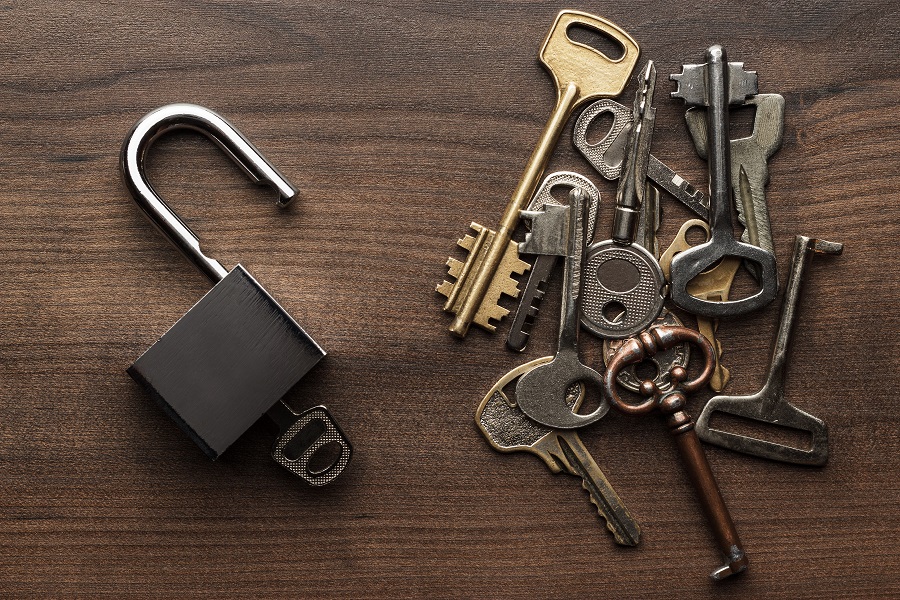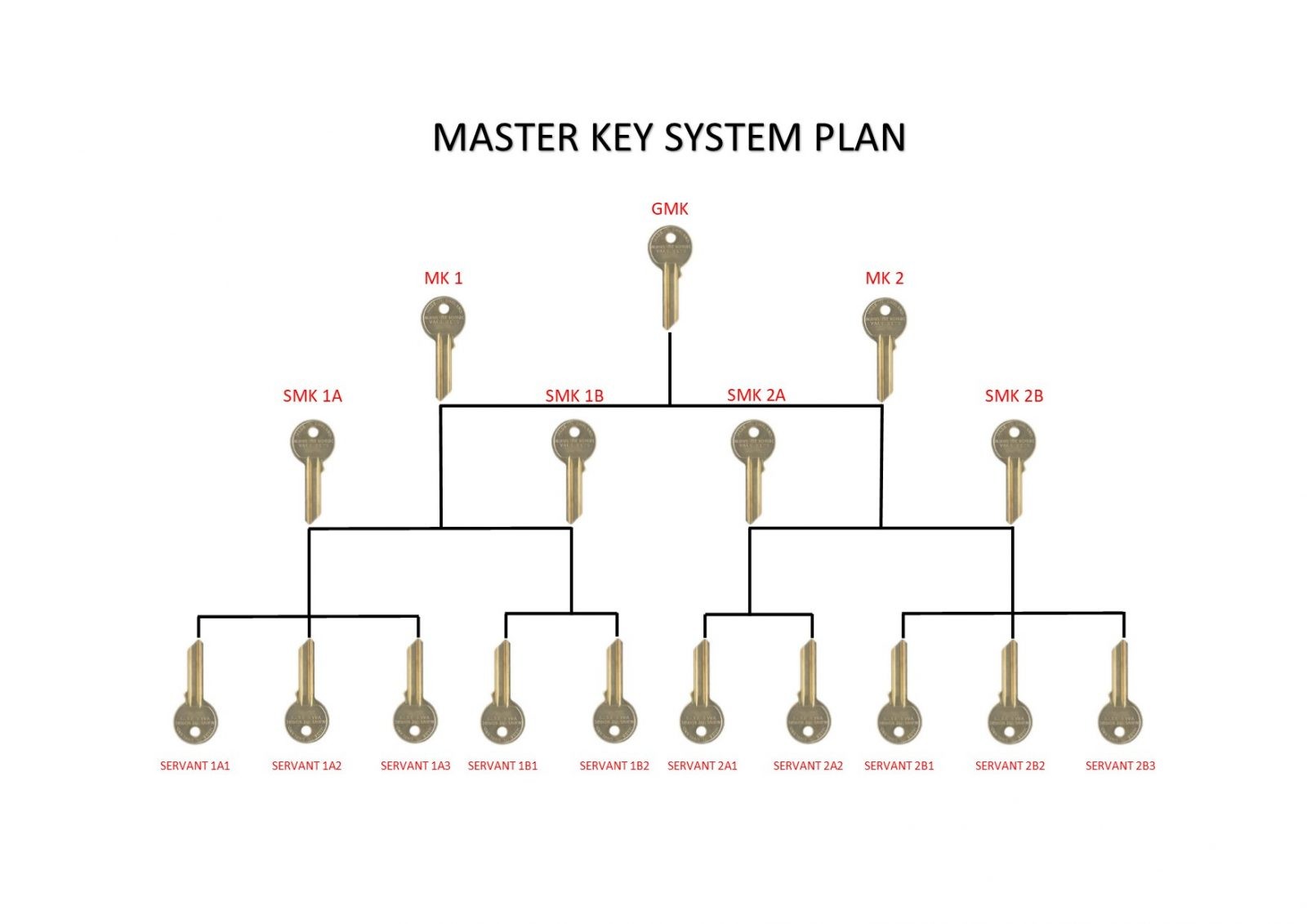The concept of a master key is fascinating, but not everyone is familiar with it. Can you explain how two locks can share the same key? Further, how can a key that unlocks one door also unlock the other? To grasp the concept of master keys, one must be familiar with the inner workings of locks, the process by which a simple lock is transformed into a master key lock, and the methodology behind developing such systems. Read on to learn everything you need to know about master keys, including what they are, how they are used, their benefits and drawbacks, and more:
What Are Master Keys?
Many building owners and managers, especially those in charge of large office buildings and apartment complexes, prefer not to have their tenants or employees carry many keys. Nor do they choose to bear it themselves because of the bother they would cause. Also, they wish to limit entry to the building to employees and staff members depending on their roles within the company. In a lock system using master keys, one key can be used to unlock all the connected locks. In the context of locking systems, a “master key system” is a configuration in which a single key can be used to unlock a set number of locks. In an emergency, they allow for quick access to all areas of the property and contribute to the overall sense of safety and control.
How Do Master Keys Work?
Pinned tumbler locks are commonly used in master key systems because they allow multiple locks to be opened with a single key. The driver pin and the key pin of a pin tumbler lock are flipped over to the other side of the shear line when the correct key is inserted. For the key pins to reach the correct height, the key must have the right grooves. Installing a master wafer between the driver pin and the key pin of a conventional pin tumbler makes it suitable for use with a master key system.
The master key system diagram shows the hierarchical relationship between the master keys and the alphabetical or numerical coding assigned to the lock cylinders. A design or blueprint of the property’s key and access system is called a master key system schematic. It’s like an architect’s blueprint for a building; it conveys the intended design of a master key system to control who has access to which parts of the building and when.
Before having master keys made, you can plan out the system’s layout, calculate how many will be needed, and choose who will have access to them. In this diagram, the keys towards the top can open many doors, while those near the bottom might only open one. A master key system is more foolproof if it contains only one or two layers of keys. This emphasizes the significance of prior preparation.
Levels Of A Master Key System
The keys have tiers in a master key system based on the number of locks each can open. The number of tiers could change based on factors like the property’s scale and traffic volume. The four tiers of a master key system are as follows, starting with the lowest level of security and working their way up to the highest:
● Sub-Master Keys
User keys, sometimes known as key duplication services, are designed to work with a single lock or a set of locks that share the same mechanical configuration. A master key, or any key with a higher echelon, can be used to open any lock that one of these keys can access.
● Master Key
The master key, or MK for short, is the special key used to convert a standard lock into a master-keyed one. Without it, you can only unlock one of the doors. This key could be the most important one in the system, depending on how big the system is.
● Grand Master Key
A grand master key (or gmk for short) grants access to several different master key systems. It can unlock all sub-master systems and master systems directly beneath it.
● Great Grand Master Key
The grand master key, abbreviated game, can be used to access any system protected by a grand master key, any master key, and any sub-master key.
Where Are Master Keys Used?
It is the job of a master key system to make it easier to let authorized people into certain sections of a building while limiting their movement in other areas that aren’t as important to the operation of the business. There are many different uses for master keys, ranging from private houses to big office complexes; one set of master keys can simultaneously provide access to two or more different levels.
It starts with a sub-master key and then moves on to the master key, the grand master key, the great grand master key, the great, great, grand master key, and so on. These systems are best suited for buildings with multiple tenants because it can be difficult to manage access for many tenants, and it can be difficult to keep track of all the keys. Installing a master key system that carefully restricts who can enter certain building areas and at what time is the simplest and most effective solution to handle this problem.
Conclusion
The proprietor or management of a company responsible for the establishment’s safety should have unrestricted access to the building at all times. With a master key system, you have complete control over who has access to which locks within your company. With a master key system, you and any other authorized employees can access all doors and locks. However, if they are not configured appropriately, they can potentially be a security risk. It is important that only those individuals with a legitimate need for master keys have access, that it is impossible to make duplicates of these keys, and that your company adheres to other secure key control standards such as serial numbering, user-rekeyable locks, and key tracking. Master keys should not be distributed to anyone else.

